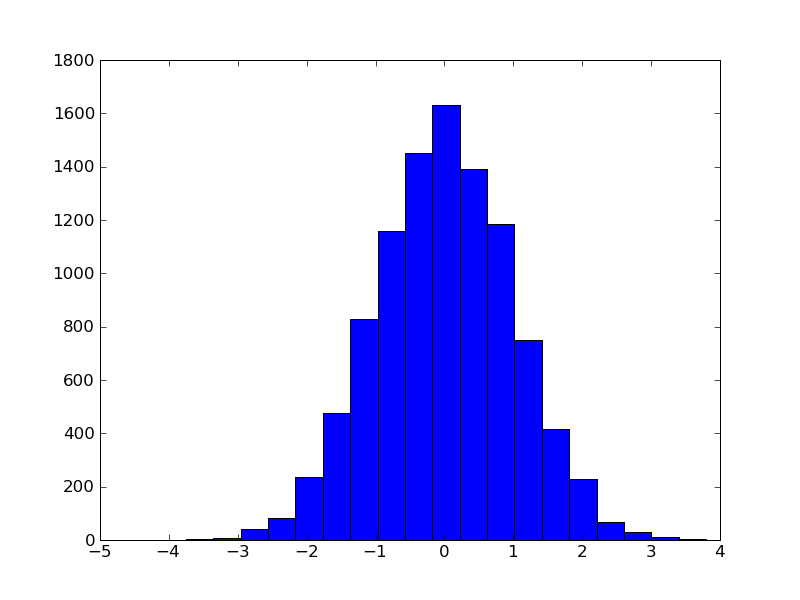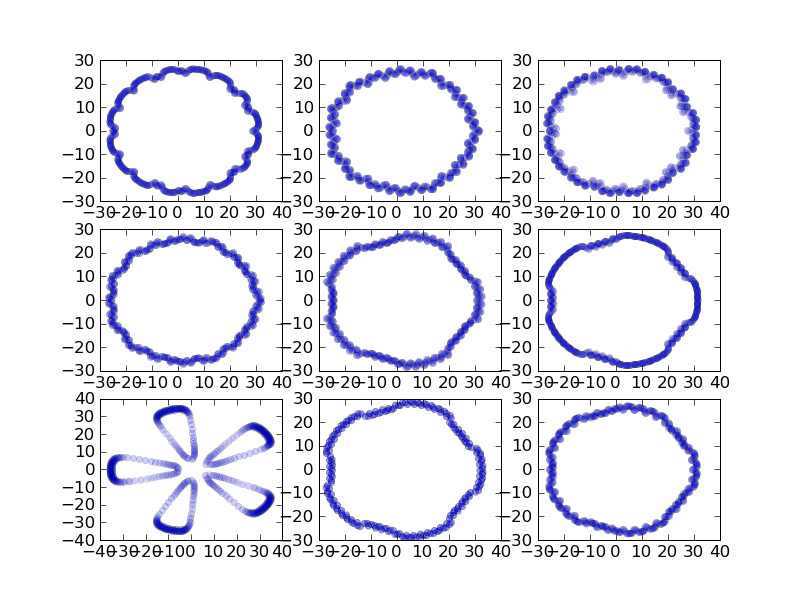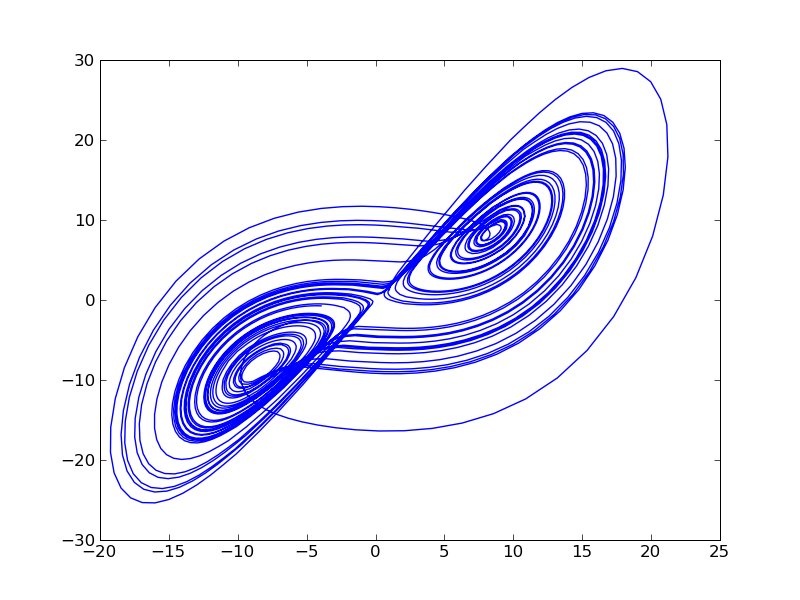12012010 Python matplotlib
matplotlibがメインなのかな?目次だけだとよくわからん。
 Beginning Python Visualization: Crafting Visual Transformation Scripts (Books for Professionals by Professionals)
Beginning Python Visualization: Crafting Visual Transformation Scripts (Books for Professionals by Professionals)Shai Vaingast
Apress / ¥ 4,123 ()
在庫あり。
ビジュアライジング・データ読んどけば良い気もするが。
12012010 Python matplotlib
matplotlibがメインなのかな?目次だけだとよくわからん。
 Beginning Python Visualization: Crafting Visual Transformation Scripts (Books for Professionals by Professionals)
Beginning Python Visualization: Crafting Visual Transformation Scripts (Books for Professionals by Professionals)ビジュアライジング・データ読んどけば良い気もするが。
26112009 Python matplotlib
Pythonの描画ライブラリであるmatplotlibの本が出てた。
 Matplotlib for Python Developers: Build Remarkable Publication Quality Plots the Easy Way
Matplotlib for Python Developers: Build Remarkable Publication Quality Plots the Easy Way欲しいのう
15082009 Python matplotlib PRML
PRML11章。一様乱数から正規乱数を発生させる。
from math import sin,cos,pi,log,sqrt
from random import random
def box_muller():
z1 = random()
z2 = random()
return sqrt(-2*log(z2)) * sin(2*pi*z1)
if __name__ == "__main__":
from pylab import *
x = [box_muller() for i in range(10000)]
hist(x,20)
savefig("box_muller.png")

11072009 Python macbook matplotlib
macbookでmatplotlibを使っていたら出たエラー。
LookupError: unknown encoding: X-MAC-JAPANESE
/opt/local/Library/Frameworks/Python.framework/Versions/2.6/lib/python2.6/site-packages/matplotlib/cbook.pyというファイルを書き換えた
def unicode_safe(s):
if preferredencoding is None: return unicode(s)
elif preferredencoding == 'X-MAC-JAPANESE': return unicode(s)
else: return unicode(s, preferredencoding)
02072009 Python matplotlib
ローレンツのついでにgumowski

class Gumowski:
"Gumowski-Mira Map"
def __init__(self, x0, y0, a):
self.x0 = x0; self.y0 = y0
self.a = a;
def f(self,x):
return self.a*x + 2*(1-self.a)*x**2/(1+x**2)
def calc(self, n):
dat = []
x,y = self.x0, self.y0
for i in range(n):
nx = y + self.f(x)
ny = -x + self.f(nx)
dat.append([nx,ny])
x,y = nx,ny
return dat
if __name__ == "__main__":
from pylab import *
from random import random
n = 3
for i in range(n*n):
p = str(n) + str(n) + str(i+1)
subplot(p)
a = random() * 0.1 + 0.3
gumow = Gumowski(20, 20, a)
dat = gumow.calc(1000)
x = [d[0] for d in dat]
y = [d[1] for d in dat]
plot(x,y,'bo', alpha=0.1,ms=5)
savefig("gumow.png")
01072009 Python matplotlib
どう書くより。
python+matplotlibで。

class Lorenz:
"Lorenz attractor"
def __init__(self, x0, y0, z0, p, r, b, dt):
self.x0 = x0; self.y0 = y0; self.z0 = z0
self.p = p; self.r = r; self.b = b
self.dt = dt
def calc(self, n):
dat = []
x,y,z = self.x0, self.y0, self.z0
for i in range(n):
dx = (-1 * self.p * x + self.p * y) * self.dt
dy = (-x * z + self.r * x - y) * self.dt
dz = (x * y - self.b * z) * self.dt
x += dx; y += dy; z += dz
dat.append([x,y,z])
return dat
if __name__ == "__main__":
from pylab import *
lorenz = Lorenz(1.0, 1.0, 1.0, 10.0, 28.0, 8.0/3.0, 0.01)
dat = lorenz.calc(5000)
x = [d[0] for d in dat]
y = [d[1] for d in dat]
plot(x,y)
savefig("lorenz.png")